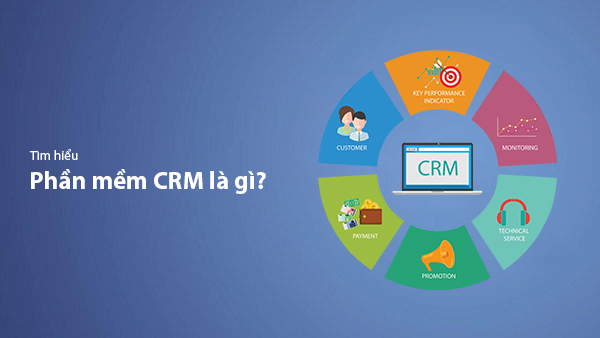A Guide to Effectively Identifying Customer Segments in Marketing
- Published on

- What is Customer Segmentation?
- The Role of Customer Segmentation in Marketing
- Benefits of Identifying the Right Customer Segments
- Why is Customer Segmentation Important?
- Understanding Customer Needs
- Creating Relevant Content
- Developing Effective Pricing and Distribution Strategies
- Real-Life Example
- Effective Customer Segmentation Criteria
- Geographic Criteria
- Demographic Criteria
- Psychographic Criteria
- Behavioral Criteria
- Steps to Identify Customer Segments
- Step 1: Collect Customer Data
- Step 2: Analyze and Group Data
- Step 3: Define Common Characteristics of Each Segment
- Step 4: Validate Segments Through Market Research
- Step 5: Regularly Review and Optimize the Strategy
- Tools to Support Customer Segmentation
- Google Analytics
- CRM (Customer Relationship Management)
- Surveys and Interviews
- Facebook Audience Insights
- Notes When Segmenting Customers
- Avoid Overly Narrow or Broad Segments
- Ensure Practicality and Feasibility
- Always Update Customer Trends
- Real-Life Case Studies: Successful Campaigns with Customer Segmentation
- Example 1: Fashion Brand
- Example 2: SaaS Company
- Conclusion
In today's modern business era, customer segmentation is no longer optional but has become a vital factor in ensuring the success of marketing campaigns. Accurately identifying customer segments helps businesses understand the needs, habits, and desires of different target groups. This not only optimizes resources but also enhances the ability to reach the right target customers, thereby increasing conversion rates and revenue.
What is Customer Segmentation?
Customer segmentation is the process of dividing a customer base into smaller groups based on common characteristics such as geography, demographics, psychographics, or behavior. Each group will have unique needs, desires, and behaviors, allowing businesses to design tailored marketing strategies for each segment.
The Role of Customer Segmentation in Marketing
Customer segmentation is the foundation for successful marketing campaigns. It brings significant benefits such as:
- Personalized messaging: Customers feel that products/services are tailored for them, increasing connection and conversion.
- Improved distribution efficiency: Marketing channels are optimized to reach the target customer groups, saving costs.
- Strategic decision-making: Segmentation data allows businesses to build effective product, pricing, and distribution strategies.
For example, a luxury fashion brand can segment customers by income and lifestyle to create campaigns that resonate with high-end consumers.
Benefits of Identifying the Right Customer Segments
- Optimize advertising costs: Invest in potential customer groups instead of wasting resources on irrelevant audiences.
- Increase conversion rates: When messages and products match customer needs, they are more likely to make a purchase.
- Build loyalty: Proper segmentation helps businesses serve their current customers better, thereby maintaining long-term relationships.
Why is Customer Segmentation Important?
In a competitive market, not all customers are suitable for every marketing strategy. Clearly identifying customer segments helps businesses focus their resources effectively, resulting in higher efficiency. Here are reasons why segmentation is crucial:
Understanding Customer Needs
Customer segmentation allows businesses to identify the needs, desires, and pain points of each target group. This ensures:
- Marketing messages become personalized: Building a stronger connection with customers.
- Improved products/services: Meeting exactly what customers truly need.
For instance, a software-as-a-service (SaaS) provider can divide customers into two groups: small and medium-sized businesses (SMEs) and large enterprises. This helps them design service packages and messages tailored to each segment.
Creating Relevant Content
Content is only effective when it targets the right audience. Customer segmentation allows businesses to:
- Develop content based on preferences, lifestyle, and shopping habits of customers.
- Ensure messages are delivered at the right time through the right channels.
For example, in the retail sector, a brand can send promotional emails about beauty products to women aged 25-35 based on their past shopping behavior.
Developing Effective Pricing and Distribution Strategies
Understanding customer segmentation enables businesses to:
- Set prices appropriate to each group's spending capacity.
- Choose optimal distribution channels to reach customers.
For example, a luxury fashion brand might distribute products in flagship stores in central areas targeting high-income customers.
Real-Life Example
Case Study: A fast-food brand wanted to increase revenue from young customers. After analyzing data, they divided customers into two main segments:
- University students: Prioritized affordable pricing and combo promotions.
- Office workers: Focused on quick, convenient, and quality meals.
As a result, the brand launched ad campaigns on platforms like TikTok for students and LinkedIn for office workers, boosting revenue by 30%.
Customer segmentation is not just a marketing tactic but a long-term strategy to ensure businesses consistently meet the needs of their target market.
Effective Customer Segmentation Criteria
To accurately and effectively segment customers, businesses need to rely on specific criteria. Below are four commonly used criteria:
Geographic Criteria
This criterion helps businesses segment customers based on geographic locations such as countries, regions, or specific areas.
- Example: A food company can create tailored promotional campaigns for customers in the North and South, based on the distinct tastes and eating habits of each region.
Demographic Criteria
This important criterion includes factors such as:
- Age: Younger customers often prefer new tech products, while middle-aged groups tend to opt for sustainable and durable products.
- Gender: Fashion brands often segment by gender to design and market suitable products.
- Income: High-income customers will be offered premium products, while middle-income groups focus on affordable options.
Psychographic Criteria
This criterion focuses on personality, values, interests, and lifestyle of customers.
- Example: A furniture brand might target minimalist enthusiasts with Scandinavian-style products.
Behavioral Criteria
Segmenting customers based on shopping behavior, usage frequency, or loyalty levels to the brand.
- Example: A cosmetics brand might segment into:
- Retail customers.
- Loyal customers (using products regularly).
- Potential customers (looking for new products).
Steps to Identify Customer Segments
To successfully segment customers, follow these 5 steps:
Step 1: Collect Customer Data
Use data sources such as:
- Reports from Google Analytics.
- Data from CRM systems.
- Direct surveys via email or social media.
Step 2: Analyze and Group Data
Based on the mentioned criteria, divide customers into groups with common characteristics found in the data.
Step 3: Define Common Characteristics of Each Segment
Summarize the main features of each group, for example:
- Group A: Aged 18-25, loves technology, frequently shops online.
- Group B: Aged 35-45, prioritizes quality, often shops in-store.
Step 4: Validate Segments Through Market Research
Conduct small-scale test campaigns to confirm that the identified segments are accurate and viable.
Step 5: Regularly Review and Optimize the Strategy
Customer segmentation is not a one-time activity. Regularly review and adjust based on new data.
Tools to Support Customer Segmentation
Using support tools helps businesses optimize the customer segmentation process. Below are popular and effective tools:
Google Analytics
- Analyze user behavior on the website: time spent, popular pages, and traffic sources.
- Help identify segments based on geography, interests, and device usage.
Suggestion: If you're new to Google Analytics, refer to Basic Guide to Google Analytics.
CRM (Customer Relationship Management)
CRM systems like HubSpot, Salesforce help manage and analyze customer data in detail:
- Track purchase history and shopping behavior.
- Manage contact information and customer feedback.
- Identify loyal customers and potential leads.
Surveys and Interviews
Online surveys (using Google Forms, Typeform) or personal interviews help collect qualitative and quantitative data from customers. This is the best way to deeply understand their needs and desires.
Facebook Audience Insights
This tool helps businesses analyze target audiences on Facebook:
- Demographic information.
- Interests and behaviors on social media.
- Evaluate the effectiveness of ad campaigns.
Learn more: How to Run Effective Facebook Ads.
Notes When Segmenting Customers
To ensure customer segmentation achieves the highest effectiveness, consider the following factors:
Avoid Overly Narrow or Broad Segments
- Segments that are too narrow will leave insufficient data to build an effective strategy.
- Overly broad segments may reduce the precision of targeting.
Ensure Practicality and Feasibility
Segments should be accessible to the business and easily applied in marketing strategies.
Always Update Customer Trends
Customer behavior and needs change over time. Therefore, regularly update data and adjust segmentation strategies accordingly.
Real-Life Case Studies: Successful Campaigns with Customer Segmentation
Example 1: Fashion Brand
A fashion brand used demographic segmentation to target female customers aged 25-35 in major cities. Results:
- Increased revenue by 40% from the target customer group.
- Improved ad effectiveness by optimizing content tailored to fashion preferences and income levels.
Example 2: SaaS Company
A project management software provider segmented customers based on business size:
- Small businesses (10-50 employees): Affordable packages with basic features.
- Large businesses (50+ employees): Premium packages with advanced analytics tools.
This strategy increased conversion rates by 25% within three months.
Conclusion
Accurately identifying customer segments not only helps businesses optimize costs but also improves the effectiveness of the entire marketing campaign. From understanding customer needs, creating relevant content, to optimizing marketing messages, customer segmentation plays a central role in all successful marketing activities.
Start by applying the right segmentation criteria and leveraging support tools such as Google Analytics, CRM, or customer surveys. Don’t forget to regularly review and update segmentation strategies to stay aligned with market changes.
Latest Posts

Lesson 26. How to Use break, continue, and return in Java | Learn Java Basics
A guide on how to use break, continue, and return statements in Java to control loops and program execution flow effectively.

Lesson 25. The do-while Loop in Java | Learn Basic Java
A detailed guide on the do-while loop in Java, including syntax, usage, examples, and comparison with the while loop.

Lesson 24. How to Convert Decimal to Binary in Java | Learn Basic Java
A guide on how to convert numbers from the decimal system to the binary system in Java using different methods, with illustrative examples.

Lesson 23. How to Use the While Loop in Java | Learn Java Basics
Learn how to use the while loop in Java with syntax, real-world examples, and practical applications in Java programming.
Related Posts

What is CRM Software? Top 15+ Best Customer Relationship Management Software
Discover the definition of CRM software, its role in customer relationship management, and a list of 15+ top CRM solutions to help businesses enhance customer service performance and achieve sustainable growth.

What Is Local Guide? Benefits of Becoming a Local Guide on Google Maps
Local Guide is a community program by Google Maps where users can contribute reviews, photos, and location information to improve map data. This article explains what Local Guide is and the benefits of being an active member.

What is Zalo OA? A Detailed Guide to Creating Zalo Official Account for Businesses
Zalo Official Account (Zalo OA) is a crucial tool that helps businesses connect with customers and optimize their online business operations. This article provides a step-by-step guide on how to create a Zalo OA from A to Z.

What is Zalo Ads? A Guide to Running Effective Zalo Ads
Discover what Zalo Ads are and learn how to run effective Zalo advertising campaigns to reach customers and boost sales in the digital era.

